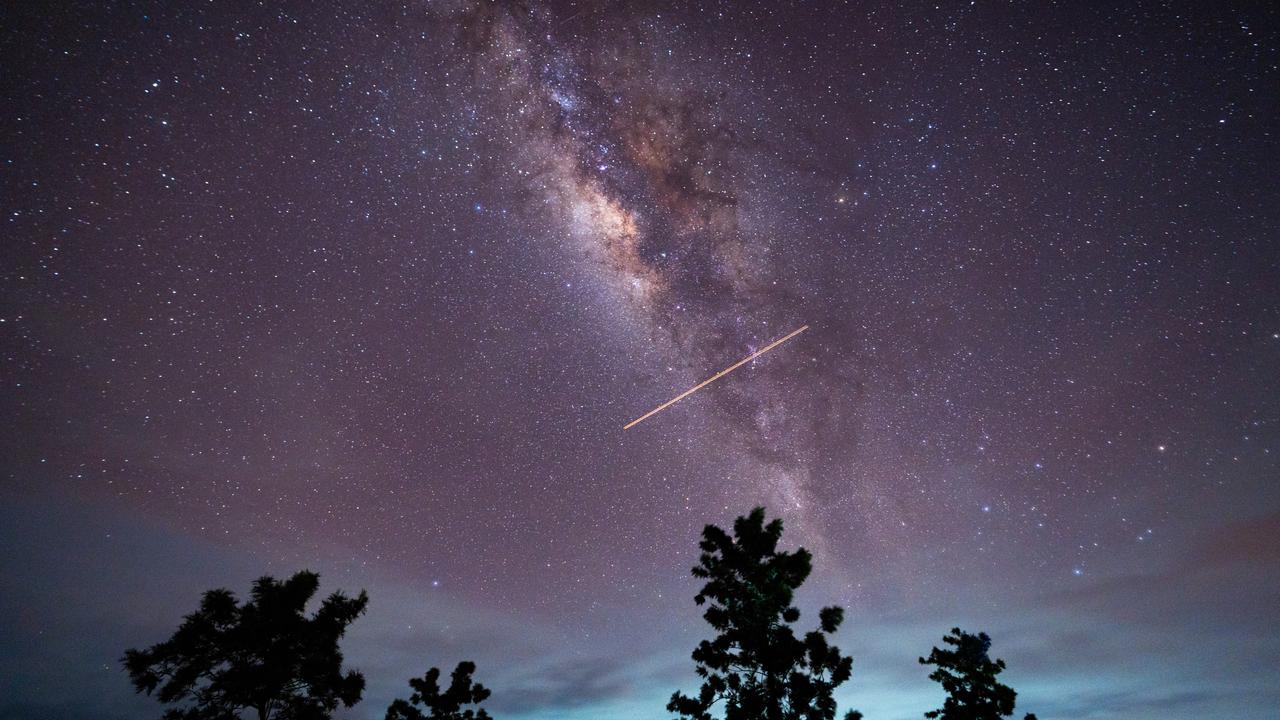Dangerous comet is greatest threat to Earth
A comet that is double the size of the one that killed the dinosaurs is considered to be the most dangerous object in our solar system.

A comet twice the size of the one that killed the dinosaurs comes dangerously close to Earth every once in a while.
Every year, stargazers get out their telescopes with excitement to watch the Perseids meteor showers in July and August – and Comet Swift-Tuttle is to thank for the display, The Sun reports.
The Perseids, which appear to us as beautiful shooting stars lighting up the night sky, is really an enormous stream of space debris that our Earth is periodically passing through.
This stream extends for more than 15 million km through space and is the product of Comet Swift-Tuttle.
What is Comet Swift-Tuttle?
Swift-Tuttle (officially designated 109P/Swift-Tuttle) is a periodic comet that orbits our sun every 133 years.
Comets are “cosmic snowballs of frozen gases, rock and dust,” according to NASA.
When a comet approaches the sun, it forms a “tail” made of gas and dust particles that face away from the large star.
Swift-Tuttle was discovered independently by both Lewis Swift and Horace Tuttle in 1862.
There are currently 3743 known comets in our solar system, but Swift-Tuttle is the most concerning.
Want a streaming service dedicated to news? Flash lets you stream 25+ news channels in 1 place. New to Flash? Try 1 month free. Offer ends 31 October, 2022 >

Why is Swift-Tuttle believed to be dangerous?
This comet is estimated to have a nucleus of about 25km across – twice the size of the Chicxulub impactor, which was the asteroid that killed off the dinosaurs.
Swift-Tuttle also follows a very steep orbit around the sun, which contributes to its quick-moving speed of about 57km/second.
In fact, the comet is moving four times faster than Chicxulub did when it impacted Earth, according to Space.com.
Because of these factors, the comet has been dubbed “the most dangerous object known to humanity,” according to Forbes.
And it will likely be considered dangerous for 10,000 to 20,000 years, after which “its orbit is likely to deteriorate so that it will either fall into the sun or be thrown out of the solar system,” astronomer Gerrit L. Verschuur writes in his book Impact!: The Threat of Comets and Asteroids.
Verschuur added that this will be the case “provided it doesn’t hit Earth before that”.
The comet’s next perihelion is July 12, 2126.

What are the chances of Swift-Tuttle hitting Earth?
Every 133 years, the comet comes several million kilometres within Earth’s orbit.
It last entered our inner solar system in December 1992 and is not expected to come back until 2126, when it will be within 22.8 million km of Earth with an apparent magnitude of about 0.7, according to one study.
While these figures don’t worry scientists, the issue is that it’s hard to 100 per cent rule out impact.
Every time the comet enters our inner solar system, there’s a chance that one of the gas giant planets will influence its orbit, putting it on a trajectory towards Earth.
Each orbit contains about a 0.000002 per cent probability of the comet hitting Earth – six times greater than your odds of winning the Powerball, according to Medium.
Still, scientists have the next 2000-plus years of orbits accurately mapped out, and the Earth is expected to stay safe until at least 4479, which is when it will come quite close to our planet once again.
Even then, though, there is still a less than a 1-in-a-million chance of impact.
“Its orbit passes very close to the Earth’s orbit so that it has been viewed as a hazardous object over the years,” Paul Chodas, NASA’s manager for the centre of near-Earth object studies, told Space.com.
“Now, we know its orbit very well, well enough to say that we are safe from an impact for many thousands of years,” he said.

What would happen if Swift-Tuttle hit Earth?
If the comet was to strike the planet, the impact would be about 300 times worse than Chicxulub’s 65 million years ago.
“It would be a very bad day for Earth,” Donald Yeomans, a senior research scientist at NASA’s Jet Propulsion Laboratory, told Live Science.
A comet impact of this magnitude would have different consequences depending on where it hits.
If Swift-Tuttle struck Earth’s ocean surface, the impact could trigger powerful earthquakes and tsunamis.
Should it impact land, the comet could cause gases such as sulfur dioxide to enter Earth’s stratosphere.
These gases would initially cause cooling, and then carbon dioxide would lead to long-term warming.
An event like this could lead to mass extinctions around the globe, Princeton geoscientist Gerta Keller told Live Science.
However, Dr Yeomans reassured that these hypothetical scenarios “are not going to happen”.
This story originally appeared on The Sun and was reproduced here with permission





